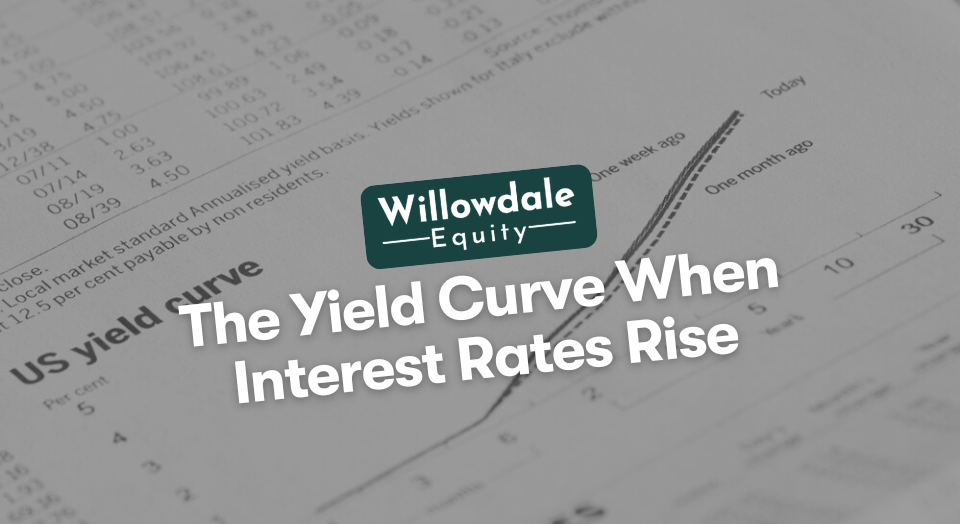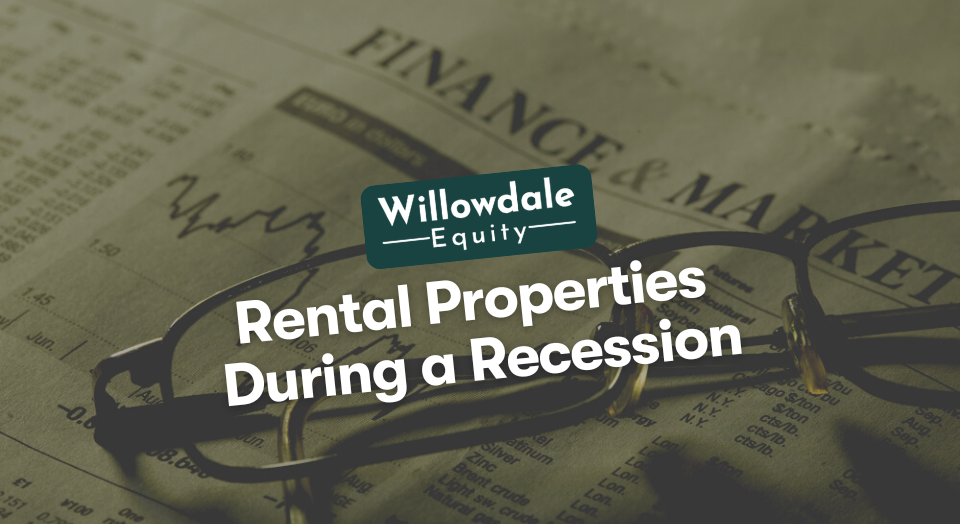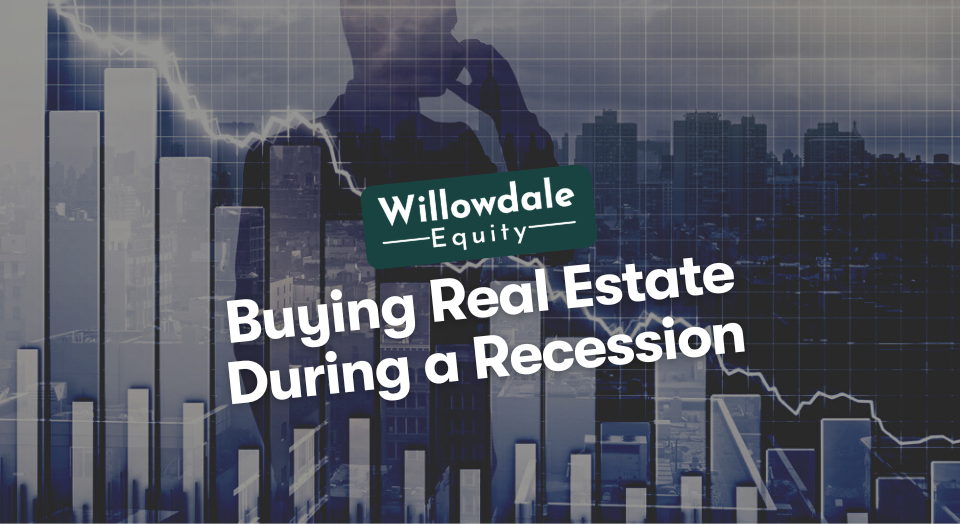
What Happens to Yield Curve When Interest Rates Rise?
This article is part of our guide on buying real estate during a recession, available here.
Investors need to know what happens to the yield curve when interest rates rise. The yield curve is a huge indicator of how the economy will perform. One specific yield curve trend has predicted every economic recession since 1955. After reading this article, you’ll understand the wild implications of the yield curve.
Key Takeaways
-
High-quality bond yields appear more attractive to investors when interest rates rise. This is where we see a big pivot from stocks to bonds. As a result of this pivot, stock valuations generally decline.
-
A flat yield curve occurs when a short-term and long-term credit quality bond provides diverging yields. This phenomenon shows that long-term bonds are seeing a spread while short-term bonds are decreasing yield.
-
Inflation-proof assets include gold, energy stocks, some commodities, and real estate.
What is the Yield Curve and Why is it Important?
The yield curve is a line that plots interest rates (yields) of bonds of equal credit quality. A yield curve’s slope gives an idea of future interest rate changes and overall economic activity. An upward-sloping curve is considered a “normal” yield curve.
Conditions are considered normal and healthy when you see a slope that begins with low yields for shorter-maturity bonds that gradually slopes upward toward longer-maturity bonds. However, the yield curve can also be either flat or inverted. Next, I’ll show you what happens to the yield curve when interest rates rise.
What Happens to Yield Curve when Interest Rates Rise?
High-quality bond yields appear more attractive to investors when interest rates rise. This is where we see a big pivot from stocks to bonds. As a result of this pivot, stock valuations generally decline. This decline in stock value is closely linked with recessionary conditions. Let’s talk about what’s happening when we see a flat yield curve.
What is a Flattening Yield Curve?
A flat yield curve occurs when a short-term and long-term credit quality bond provides diverging yields. What does this mean? This phenomenon shows that long-term bonds are seeing a spread while short-term bonds are decreasing yield. We’re seeing that investors are losing confidence in the short-term performance of the economy.
This means that the “healthy” trend of short-term bonds having lower interest rates than long-term bonds is reversing. A yield curve flattens for several reasons. We often see them at the tail end of vigorous economic growth, now leading into inflationary territory.
They can also happen when investors anticipate interest rate hikes. Flat yield curves often give way to a downward slope known as an inverse yield curve. I’ll tell you why that’s something to watch for next.
What does a Downward Sloping Yield Curve Mean?
A steep curve downward raises the alarm. Also known as an inverted yield curve, a downward slope refers to a rare drop of yields on long-term debt below the yields on short-term debt of the same credit quality. It signals that investors have zero confidence in the state of the economy for the near future. Inverted yield curves have preceded every recession since 1955. The last time we saw an inverted yield curve was during the COVID-19 pandemic. This inversion preceded a “mini” recession. We also saw a yield curve inversion from December 2005 through the middle of 2007 that helped to usher in the Great Recession of 2008.
Next, I’ll cover need-to-know information on what kind of assets do well when the Federal Funds rate is spiking.
What Assets do well with Rising Interest Rates?

Inflation-proof assets include gold, energy stocks, some commodities, and real estate. A lot of what we know about how different assets perform in inflationary conditions is drawn from the inflationary era of the 1970s. Analysts see many similarities between the economy of the 1970s and today’s economy. One thing we know from that era is that gold performed beautifully. The energy sector was also a strong performer. However, the big winner during inflationary periods is real estate.
Real estate consistently keeps up with inflation. In some cases, it may even outpace inflation. Anyone paying attention today is seeing the incredible increase in rental pricing and property values. According to analysts, rents in the United States have been rising at the fastest pace since 1986. According to Zillow’s research, rental prices rose by 17% annually between March of 2021 and March 2022. Consider that the inflation rate was 8.52% during this period.
The apparent reason rents continue to rise is that people still need places to live during both inflationary and recessionary times. Some “unicorn” factors are also happening right now, making real estate a powerhouse against inflation. One is a lumber shortage that’s slowing down new builds. In addition, a combination of high materials costs and general pessimism about the economy is slowing down new builds. As a result, both renters and existing owners are staying in their homes longer.
Let’s bring it back around to the yield curve. Market chaos typically ensues when investors shuffle around from short-term to long-term bonds. This is why looking for diversified assets is essential for staying above water.
This includes gold, crypto, some commodities stocks, and real estate. Real estate is considered a safe harbor against turbulence by long-term investors because it’s a tangible asset that satisfies a basic human need for housing. I’ll wrap up with frequently asked questions about the yield curve and interest rates.
Frequently Asked Questions About The Yield Curve & Interest Rates
The yield curve is moved by changes in the interest rates of short-term and long-term bonds, ultimately determined by the Federal Funds rate set by the Federal Reserve. A typical “upward” yield curve represents low yields for shorter-maturity bonds that gradually slope upward toward longer-maturity bonds. As the curve moves from a flat shape to an inverted shape, a loss in investor trust causes long-term yields to become higher than short-term yields.
Falling interest rates cause rising bond prices with declining yields.
Interest Rates Rising & The Yield Curve - Conclusion
The yield curve is one of the most important economic indicators we have. When the yield curve steepens, or an inverted curve appears, it’s time for investors to get serious about jumping to assets that perform well in both inflationary and recessionary conditions.
Join the investor club at Willowdale Equity to access exclusive resources and private multifamily investment opportunities that can ride out the turmoil of the inverted yield curve.
Sources:
- CNBC, “How the yield curve predicted every recession for the past 50 years“
- Business Insider, “Today’s gold market looks a lot like the crazy 1970s“
- Fox Business, “Renters ‘feeling the strain’ of housing affordability as inflation surges: Pew Research“
- U.S. Inflation Calculator, “Current US Inflation Rates: 2000-2022“
- Vox, “Lumber mania is sweeping North America“
Interested In Learning More About PASSIVE Real Estate Investing In Multifamily Properties?
Get Access to the FREE 5 Day PASSIVE Real Estate Investing Crash Course.
In this video crash course, you’ll learn everything you need to know from A to Z
about passive investing in multifamily real estate.
We’ll cover topics like earned income vs passive income, the tax advantages, why multifamily, inflation, how syndications work, and much much more!





